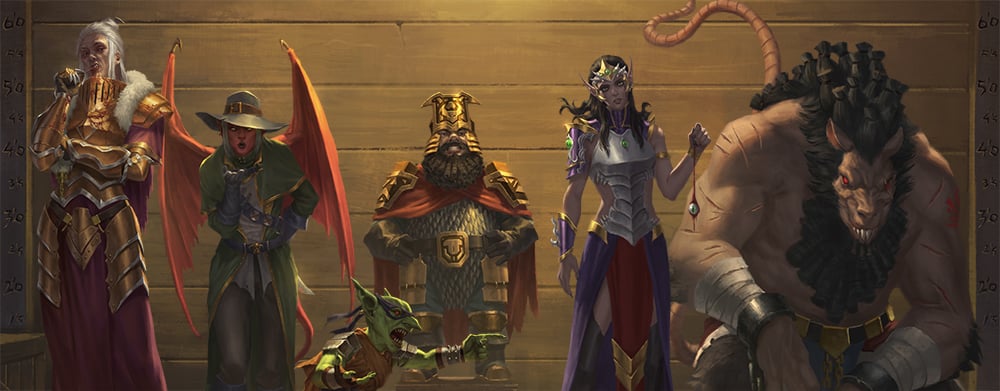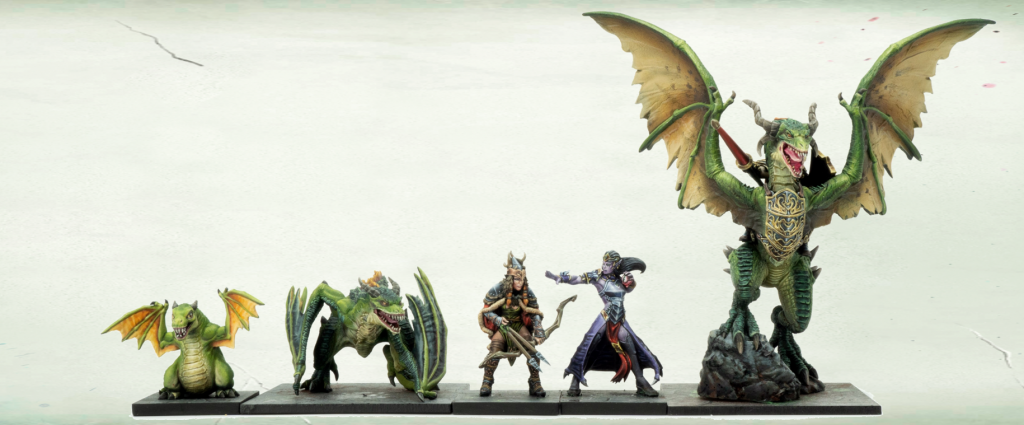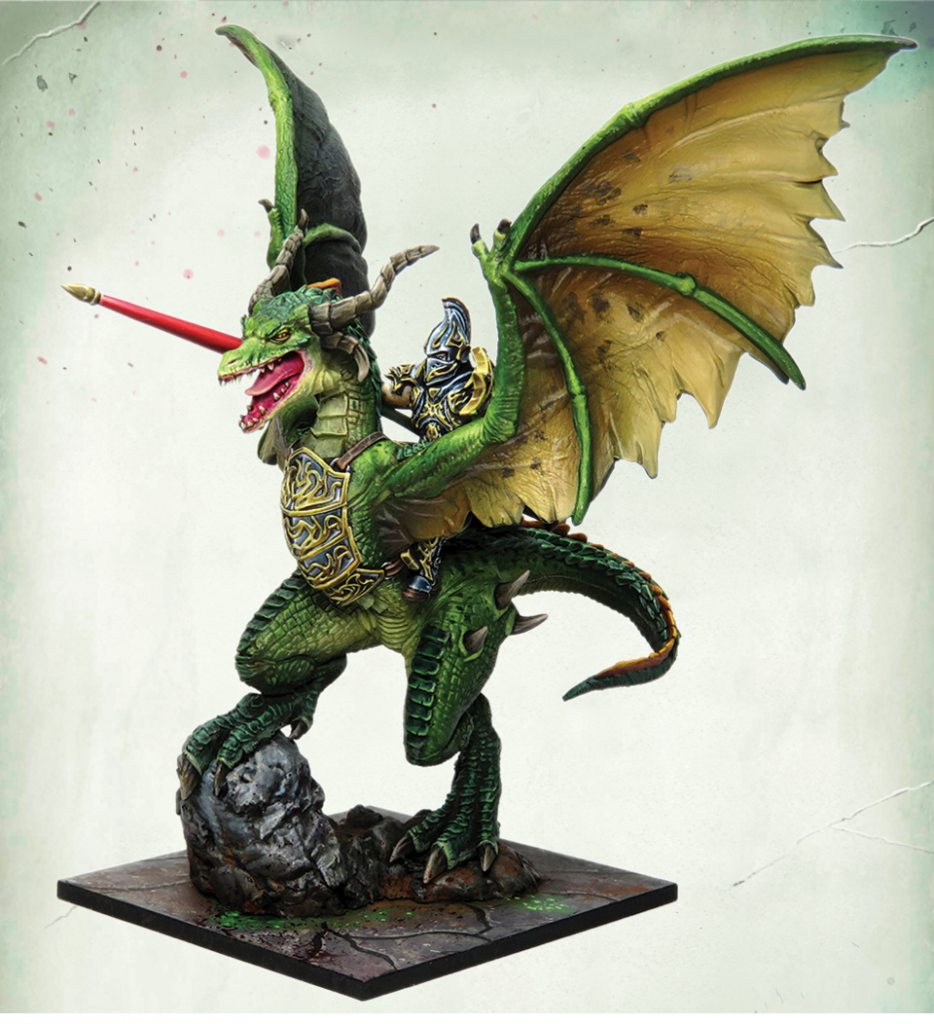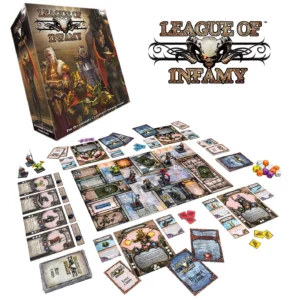League of Infamy: What is the Unseen Keep Master?
17th May 2021
Rob Burman

We've got a special guest blog from James M. Hewitt today, co-designer of League of Infamy, alongside lead designer Sophie Williams. James is here to explain a little more about the Unseen Keep Master (which allows everyone to be on the same side) and how it works.
“…but what if everyone wants to be on the same side?”
We were having one of our regular design meetings with the lovely Mantic folks, talking about League of Infamy, and the question of fully co-operative play had come up again.
We’d been having a bit of an ideological battle around this one, and I absolutely saw their point. Sophie and I have both been playing dungeon-crawling games for years, and it’s always nice to play a game where you’re working together against the game, rather than against a single antagonistic player. It’s all too often the case that this single player has less fun; they’re usually relegated to running the game for their friends, rather than having fun themselves. We could absolutely see the appeal of a set of AI rules!

Thing is, from the earliest days of working on League of Infamy, we’d had three key design goals:
- Give every player (including the Keep Master) interesting decisions.
- Make interaction between players the focus of the game.
- Make the game modular and replayable.
All of this had led us to put a lot of work into the Keep Master role, and in our minds it was utterly vital to the flow and feel of the game. In this game, the Keep Master has a lot of power. They get to choose how to defend their Keep before each Raid, spending a Defence Budget however they wish – meaning that the same scenario can play out very differently depending on their choices. During the Raid itself they control the Defenders, but they also sow discord amongst the Villains, both mechanically and in person. Throughout playtesting, shrewd Keep Masters realised early on that the Villains had a fragile alliance at best, and were usually only a couple of well-placed remarks away from slinging Disorder Cards at each other. In other words, the Keep Master role wasn’t solely mechanical – it was based around player interaction, just like what we said in our design goals. Victory!
So although we saw the appeal of AI rules, we were really worried that without the presence of the Keep Master, the game would fall flat.

Well, thankfully Mantic persisted, and we settled on a comfortable middle ground. The core game is designed as we’d originally planned, but we’ve put a load of work into an expansion set – the Unseen Master – which lets you team up with your friends to work against the game (and then, because this is still League of Infamy, stab them all in the back and run off with their coin purses). We were ever so keen to make sure that this doesn’t feel tacked-on, and retains the atmosphere of the core game while sticking to those three design goals.
“Oi, James!” I can imagine Rob screaming, as he proofreads this. “Stop rambling and tell them what it does!” Imaginary Rob is much scarier than real Rob – so I’ll oblige.
The Unseen Master consists of some extra rules and a bunch of new cards. Although it might not seem like much, there’s a whole engine hidden within which does an admirable job of simulating the devious, conniving do-gooder who normally runs the show. Only two of the cards in the expansion will be recognisable – a pair of Disorder cards which let you toy with some of the new mechanics. The rest are all-new, and add some interesting challenges to keep the players on their toes! Let’s talk about them.
The Keep Setup Deck
As I said above, the Keep Master normally has a fair bit of control when setting up the defence for a scenario, gathering a Defence Budget based on the number and expertise of the Villain party and spending it on various upgrades and tricks. To replicate this, we’ve introduced the Keep Setup deck. After laying out the basics – the board, the Keep Deck, the Defender Cards – start drawing Keep Setup cards. These might add more Defenders patrolling the corridors or guarding important Chamber, or place barricades and obstacles to stymie the Villains’ progress, or throw some nasty surprises into the Exploration Bag. The cards will work with the Defence Budget as normal, ensuring that initial Defence is balanced against the Villain party.
Defence Strategy
The real meat of the expansion is the “AI” which controls the Defenders in the Keep Phase, and the new Defence Strategy deck is the beating heart at its centre. One of these cards is drawn at the start of the phase, picking a particular Villain to be the Priority Target – this might be the Villain with the most Infamy, or the one who’s furthest from the Villain Entry Point, or the one who’s suffered the most Damage. It also introduces a special rule – maybe the Defenders get a chance to heal, or get a buff to their attacks, or get additional reinforcements.

Once the card’s been drawn the Defenders are activated, following a strict set of instructions in the form of a flow chart. During testing, we found that players barely even needed to look at it after a couple of rounds, but it does a great job of covering edge cases and making sure the Defenders act sensibly.
Alarm Triggers
The last new set of cards is the Alarm Triggers – cards with a special effect on the front, and a number of Alarm Token slots on the back. During the Keep phase, the Unseen Master will spend Alarm tokens on extra Defender activations and Reinforcements, just like a normal Keep Master would. In the End Phase, any tokens that are still in the pool will be transferred to the slots on the current Alarm Trigger. When the card fills up it is flipped, and the defenders get some kind of benefit – this might be more Reinforcements, bonus activations or extra Alarm tokens for the following round.
The Alarm Trigger cards ensure that the Unseen Master has some tricks up their sleeve that the players don’t know about, while also punishing Villains for generating too many Alarm Tokens during a round. Mentioning no names, Karzel Runesbane…
Keeping It (Un)Friendly
One of the things we were really keen to carry over from the core gameplay was the sense of backstabbing and one-upmanship between the Villain players. The whole game is written around this idea, and we didn’t want to lose it.
Because the Keep Master isn’t drawing a hand of cards (the Unseen Master doesn’t even have hands, after all) the players will have the chance to pick up Keep Cards, and play them in exchange for Infamy just like Disorder cards. We’ve woven in loads of little extra mechanics to make this an attractive option, and to drive wedges between the Villains wherever possible without going so far as to cause the game to devolve into literally nothing but backstabbing. There’s still a mission to complete, after all!

One of my favourite elements is the Turncoat. Each round, one player becomes the Unseen Master’s proxy – they have to move all the Defender models, roll all their dice, and so on. This is literally nothing more than an administrative role, but we called it the Turncoat because words have power, and it’s amazing how much it affects the other players. “Oh, you’re the Turncoat now, are you? Gonna stab us in the back?” “I’m literally still on your side, and I’ve done nothing wrong.” “Yeah, whatever, traitor…”
I sometimes worry that designing this game has turned us actually evil.
But hey… as long as we’re all having fun, right?
In Summary
The Unseen Master deck is completely compatible with everything else in League of Infamy. You can throw in expansions, play campaign or standalone games, remix it however you like. Despite my early reservations, I think it’s actually just as much fun as playing with a real Keep Master – it’s just a variant style of play. It feels quite different while also feeling similar enough to be recognisable.
So thank you, Mantic, for convincing us to push through and do this. I can’t wait to see what the response is like.
LEAGUE OF INFAMY WILL BE AVAILABLE IN STORES FROM MAY 24TH. YOU CAN PRE-ORDER NOW FROM THE MANTIC WEBSITE OR YOUR FRIENDLY LOCAL GAME STORE.




